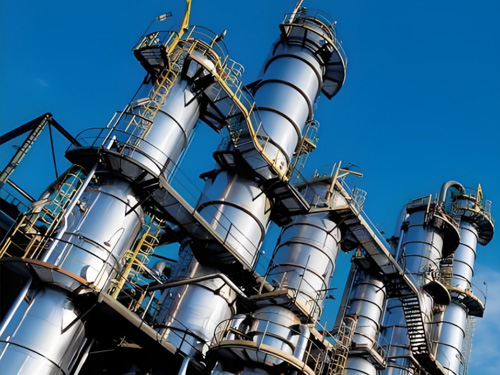
In the petrochemical industry, non-hydrogen dewaxing equipment for wax oil plays a significant role. This equipment primarily lowers the freezing point of wax oil to enhance its fluidity and usability. As the demand for high-performance petroleum products continues to grow, understanding the working principle and applications of non-hydrogen dewaxing equipment is crucial. This article provides a detailed analysis of the working principle and applications of non-hydrogen dewaxing equipment for wax oil, helping businesses make informed choices.

I. Working Principle of Non-Hydrogen Dewaxing Equipment for Wax Oil
Non-hydrogen dewaxing equipment lowers the freezing point of wax oil through a special process, ensuring good fluidity even at low temperatures. The working principle can be broken down into the following steps:
1.Pretreatment
Before entering the dewaxing equipment, the wax oil undergoes pretreatment, including heating and filtration, to remove solid particles and moisture. This ensures a smooth dewaxing process.
2.Dewaxing Treatment
The wax oil is cooled through a cooling system in a controlled low-temperature environment. The internal cooling system of the equipment lowers the temperature of the wax oil below its freezing point, causing the wax to crystallize and precipitate.
3.Separation and Recovery
The dewaxed oil passes through a separation unit to remove the precipitated wax. The separated wax can be further processed or recycled, while the treated wax oil has a lower freezing point and improved fluidity.
4.Post-Treatment
The separated wax oil undergoes further post-treatment, such as degassing, cooling, and filtration, to ensure the product meets quality standards.
II. Major Applications of Non-Hydrogen Dewaxing Equipment for Wax Oil
1.Petroleum Refining
In petroleum refining, non-hydrogen dewaxing equipment is used to treat the wax content in crude oil, enhancing its fluidity and transportation efficiency. This helps optimize the refining process and improve product quality.
2.Lubricating Oil Production
The equipment plays a vital role in the production of lubricating oils. By lowering the freezing point of wax oil, it enables the production of high-performance lubricants suitable for low-temperature environments, meeting various operational needs.
3.Chemical Products
In the production of chemical products, non-hydrogen dewaxing improves the fluidity and processing performance of the materials, enhancing the quality and stability of the final product.
4.Fuel Oil Treatment
In fuel oil processing, non-hydrogen dewaxing equipment reduces the freezing point of fuel oil, ensuring its normal use and combustion efficiency in low-temperature conditions.
III. Key Factors for Choosing Efficient Non-Hydrogen Dewaxing Equipment for Wax Oil
1.Dewaxing Efficiency
Dewaxing efficiency is a critical factor when selecting equipment. High-efficiency equipment can significantly lower the freezing point of wax oil, enhancing its fluidity and performance. Choosing equipment with high dewaxing efficiency ensures that the final product meets quality standards.
2.Energy Consumption
Low-energy consumption equipment helps reduce production costs and minimize environmental impact. Selecting non-hydrogen dewaxing equipment designed for energy efficiency can optimize energy use and improve economic returns.
3.Equipment Reliability
Equipment reliability directly affects production stability and continuity. Choosing equipment with a robust design and high durability can reduce failure rates and lower maintenance costs.
4.Automation Control
An automation control system allows for real-time monitoring and adjustment, improving operational precision and production efficiency. Modern equipment typically includes advanced automation systems to optimize the production process.
5.Ease of Maintenance and Operation
Equipment that is easy to maintain and operate minimizes downtime and operational challenges. Choosing equipment that is straightforward to maintain and operate can reduce training costs and maintenance expenses.
6.Supplier Reputation
Equipment from reputable suppliers usually offers better quality assurance and comprehensive after-sales service. Selecting a reliable supplier ensures the long-term stable operation of the equipment.
IV. Conclusion
Non-hydrogen dewaxing equipment for wax oil plays a critical role in improving fluidity and product quality. Understanding its working principles and application areas can help businesses choose the right equipment for efficient production and high-quality products. By focusing on factors like dewaxing efficiency, energy consumption, equipment reliability, automation control, maintenance convenience, and supplier reputation, companies can make informed decisions and stand out in a competitive market.
We hope this article provides valuable insights for choosing non-hydrogen dewaxing equipment for wax oil, helping businesses succeed in the petrochemical industry.



